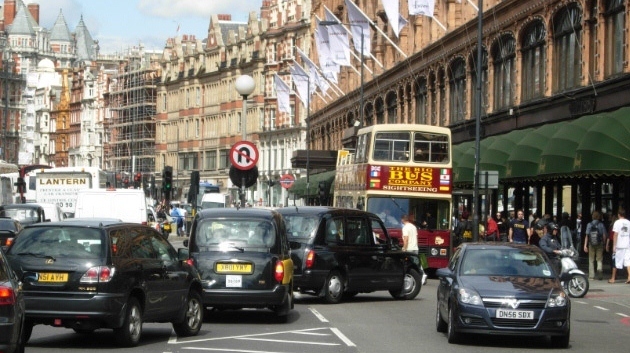Difference between revisions of "Mobility"
| (11 intermediate revisions by 3 users not shown) | |||
| Line 1: | Line 1: | ||
[[Category:Mobility]] |
[[Category:Mobility]] |
||
= {{PAGENAME}} = |
|||
[[File:t.png|25px|right|This page provides information about content and use of the Vitruv tools]]'''Mobility''' is the extent to which the movement of people and goods from one place to another is enabled. |
[[File:t.png|25px|right|This page provides information about content and use of the Vitruv tools]]'''Mobility''' is the extent to which the movement of people and goods from one place to another is enabled. |
||
| Line 22: | Line 22: | ||
Relation to urban objects: |
Relation to urban objects: |
||
* |
*Infrastructure |
||
** [[Road network]] |
** [[Road network]] |
||
** [[Rail network]] |
** [[Rail network]] |
||
** |
** [[Hub]]s (Stations, Ports) |
||
* [[Modes of transport]] |
* [[Modes of transport]] |
||
| Line 32: | Line 32: | ||
* [[Incident management]] |
* [[Incident management]] |
||
* [[Traffic management]] |
* [[Traffic management]] |
||
** [[Directing flows of people]] |
** [[Measure: Directing traffic flows|Directing flows of people]] |
||
** [[Robustness]] |
** [[Robustness]] |
||
| Line 44: | Line 44: | ||
== Related subjects == |
== Related subjects == |
||
* [[ |
* [[Crowd]]s |
||
{{references}} |
{{references}} |
||
= MAP = |
|||
<websiteFrame> |
|||
website=http://securipedia.eu/cool/index.php?wiki=securipedia.eu&concept=Mobility |
|||
height=1023 |
|||
width=100% |
|||
border=0 |
|||
scroll=auto |
|||
align=middle |
|||
</websiteFrame> |
|||
<headertabs/> |
|||
Latest revision as of 09:04, 26 January 2018
Mobility is the extent to which the movement of people and goods from one place to another is enabled.
Description
For obvious reasons, mobility is very important for the daily life of humans and as such, the continuity of the traffic should be guaranteed. Mobility is by others dependent of the traffic infrastructure and different means of transport. Since last century, mobility in Western Europe has increased tremendously. This has lead to the regular occurrence of congestion, which in turn has made the mobility system more vulnerable.

Mobility is fundamental to economic and social activities, including commuting, manufacturing, or supplying energy. Each movement has an origin, a potential set of intermediate locations, a destination, and a nature which is linked with geographical attributes. Transport systems composed of infrastructures, modes and terminals are so embedded in the socio-economic life of individuals, institutions and corporations that they are often invisible to the consumer[2].
Mobility is important for the urban planner in relation to security, since mobility is needed:
- to bring people into safety away from the incident location;
- to get emergency services to the incident location;
- to keep the daily life and the economy going.
Furthermore, hampering mobility is an attractive target for potential terrorist actions, since disruption of mobility has a large impact on society. It is furthermore an easy target, since at many locations in the transportation system, many people are gathered at the same location at the same time. The past decades have shown the vulnerability of the mobility system for terrorist attacks by several tragic incidents, e.g. the 2004 Madrid train bombings[3], the 2010 Moscow Metro bombings[4], and several attacks on the London Underground[5]
Entry points
The following concepts are the main concepts related to mobility and security:
Relation to urban objects:
- Infrastructure
- Road network
- Rail network
- Hubs (Stations, Ports)
Traffic and incident management:
Traffic safety:
Accessibility
Related subjects
Footnotes and references
- ↑ From: Owusu, Kwame, Brussels most congested European city in 2011, Autotribute, URL: http://www.autotribute.com/8899/brussels-most-congested-european-city-in-2011/, retrieved on April 11, 2012.
- ↑ The Geography of Transport Systems, Jean-Paul Rodrigue, Claude Comtois and Brian Slack (2009), New York: Routledge, 352 pages. ISBN 978-0-415-48324-7. http://people.hofstra.edu/geotrans/index.html
- ↑ http://en.wikipedia.org/wiki/2004_Madrid_train_bombings
- ↑ http://en.wikipedia.org/wiki/2010_Moscow_Metro_bombings
- ↑ http://en.wikipedia.org/wiki/Attacks_on_the_London_Underground